Erik Öberg
@erikoberg.bsky.social
Fair one-slide summary of literature leading up to 3-equation New-Keynesian model?
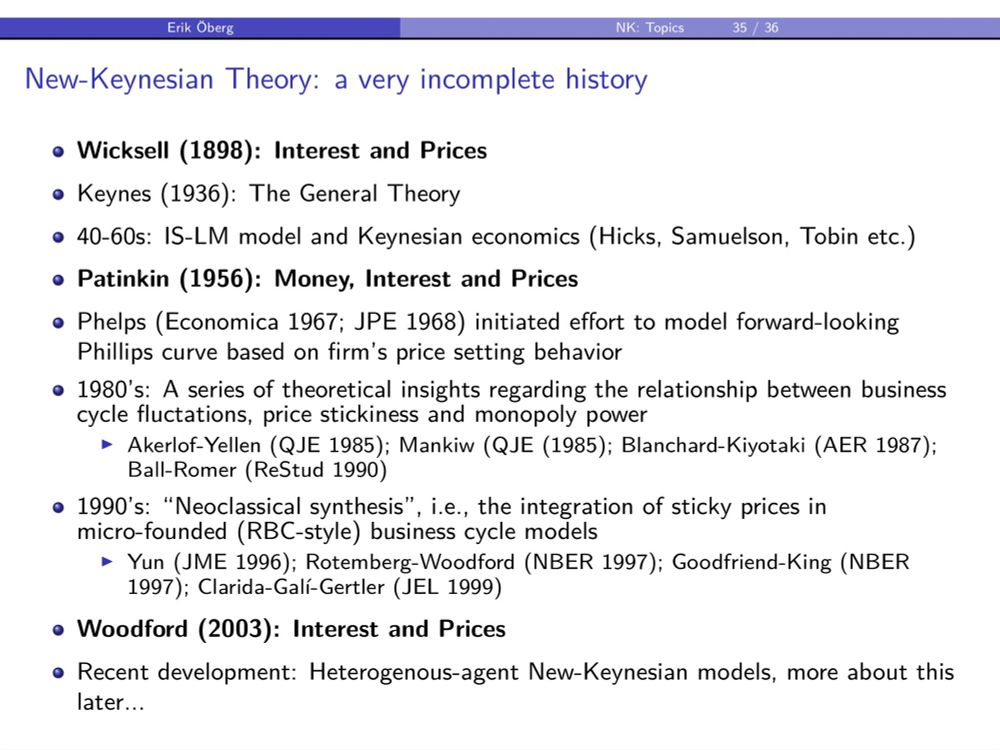
March 20, 2025 at 8:02 AM
Fair one-slide summary of literature leading up to 3-equation New-Keynesian model?
Does anybody know if there exist an updated version of these graphs from Acemoglu (JEL 2002) somewhere?
I'm preparing lectures on search models and wage dispersion, in which I use these graphs to introduce the concept of residual wage dispersion, but they are a bit outdated.
I'm preparing lectures on search models and wage dispersion, in which I use these graphs to introduce the concept of residual wage dispersion, but they are a bit outdated.
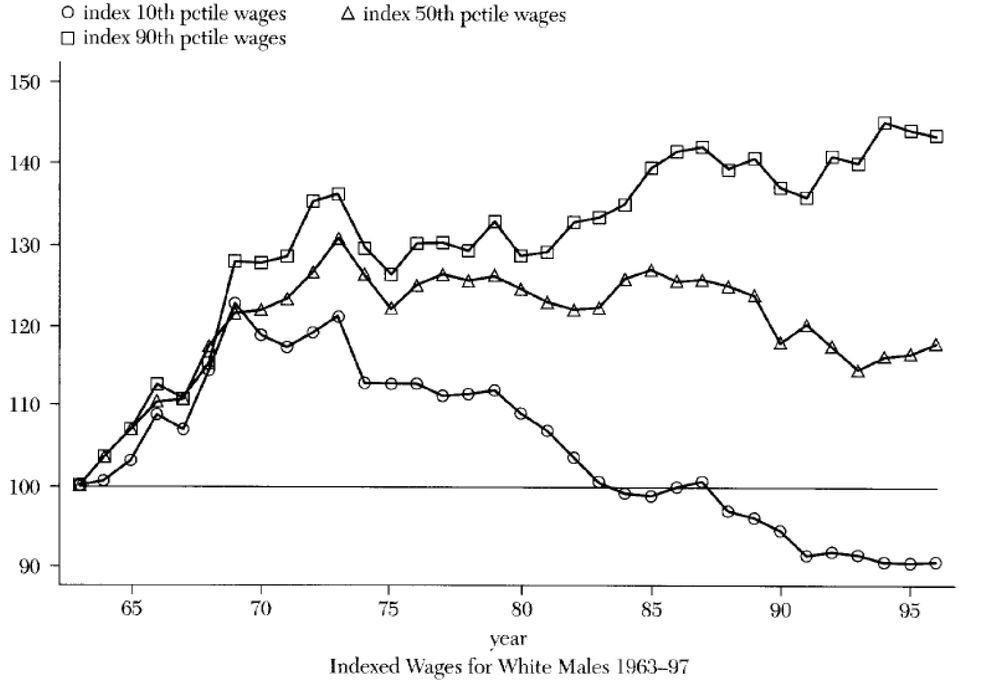

March 11, 2025 at 9:49 AM
Does anybody know if there exist an updated version of these graphs from Acemoglu (JEL 2002) somewhere?
I'm preparing lectures on search models and wage dispersion, in which I use these graphs to introduce the concept of residual wage dispersion, but they are a bit outdated.
I'm preparing lectures on search models and wage dispersion, in which I use these graphs to introduce the concept of residual wage dispersion, but they are a bit outdated.
Very happy to share that @agnetaberge.bsky.social will join
Uppsala as a post-doc in the fall! Agneta is macroeconomist coming out of IIES with a focus on labor markets and wage setting. In her JMP, she develops a theory of two-tier collective wage bargaining.
drive.google.com/file/d/1x-tV...
Uppsala as a post-doc in the fall! Agneta is macroeconomist coming out of IIES with a focus on labor markets and wage setting. In her JMP, she develops a theory of two-tier collective wage bargaining.
drive.google.com/file/d/1x-tV...

January 27, 2025 at 1:32 PM
Very happy to share that @agnetaberge.bsky.social will join
Uppsala as a post-doc in the fall! Agneta is macroeconomist coming out of IIES with a focus on labor markets and wage setting. In her JMP, she develops a theory of two-tier collective wage bargaining.
drive.google.com/file/d/1x-tV...
Uppsala as a post-doc in the fall! Agneta is macroeconomist coming out of IIES with a focus on labor markets and wage setting. In her JMP, she develops a theory of two-tier collective wage bargaining.
drive.google.com/file/d/1x-tV...
Importantly, these conclusions are insensitive to changes to a big part of the model parameter space, as per the reasoning above. For details about this, see the paper.
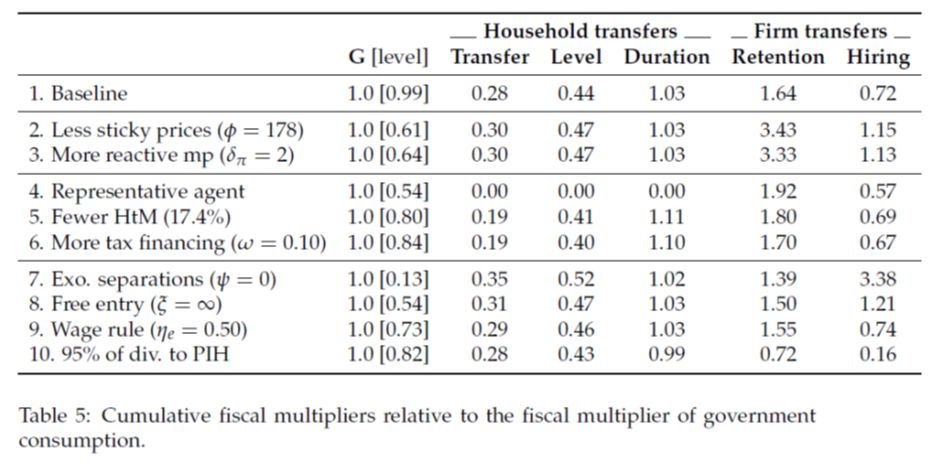
January 16, 2025 at 9:58 AM
Importantly, these conclusions are insensitive to changes to a big part of the model parameter space, as per the reasoning above. For details about this, see the paper.
Untargeted transfers to households are, in general, quite ineffective, whereas targeted transfers to the unemployed, like UI duration extensions, and job-saving retention subsidies give a lot of bang for the buck.

January 16, 2025 at 9:58 AM
Untargeted transfers to households are, in general, quite ineffective, whereas targeted transfers to the unemployed, like UI duration extensions, and job-saving retention subsidies give a lot of bang for the buck.
We find that fiscal multipliers vary greatly across different common policy interventions, from 0.3 to 1.6. You cannot compare stimulus packages by just counting dollars spent, you must look under the hood at the actual design!

January 16, 2025 at 9:58 AM
We find that fiscal multipliers vary greatly across different common policy interventions, from 0.3 to 1.6. You cannot compare stimulus packages by just counting dollars spent, you must look under the hood at the actual design!
A direct implication is that for comparing the fiscal multipliers of two different policies that achieve the same output effect, in many cases we don’t need to know all the parameters of the model, but only the parameters relating to the policy-specific direct effect.
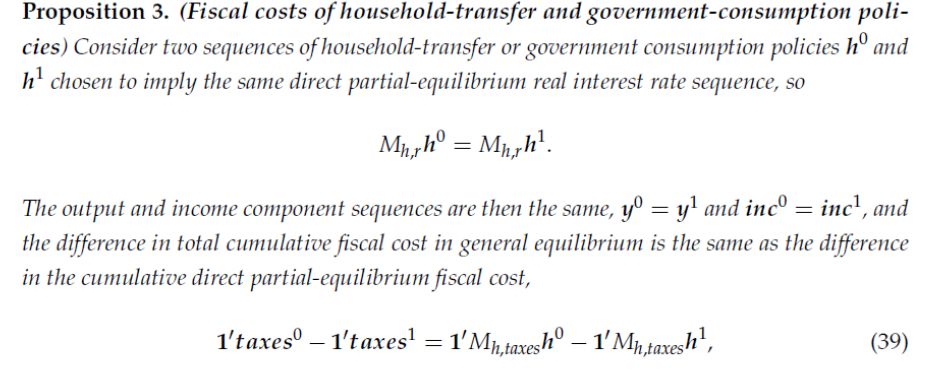
January 16, 2025 at 9:58 AM
A direct implication is that for comparing the fiscal multipliers of two different policies that achieve the same output effect, in many cases we don’t need to know all the parameters of the model, but only the parameters relating to the policy-specific direct effect.
This means that a solution to any policy shock can be written as the product of a policy-specific direct effect, and a policy-invariant GE effect, where the latter is a geometric sum of repeated cycles through these three blocks.
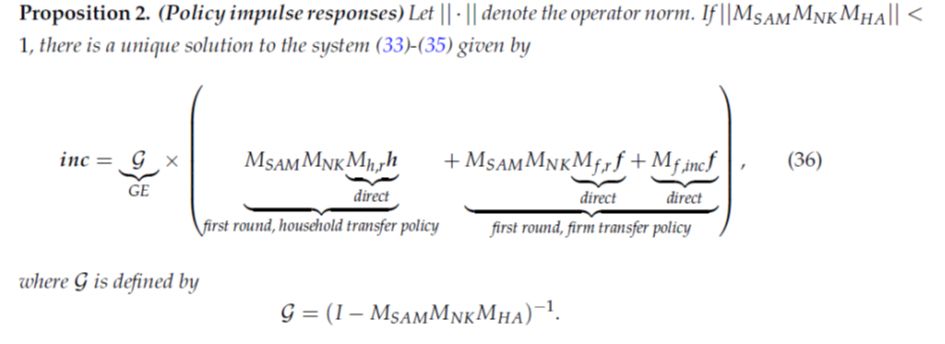
January 16, 2025 at 9:58 AM
This means that a solution to any policy shock can be written as the product of a policy-specific direct effect, and a policy-invariant GE effect, where the latter is a geometric sum of repeated cycles through these three blocks.
This is because a first-order approximation of the equilibrium in sequence space takes the form of a Directed Cycle Graph.
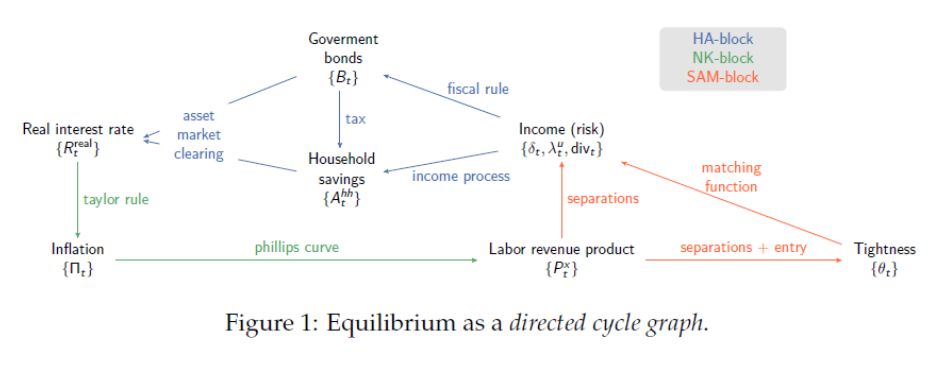
January 16, 2025 at 9:58 AM
This is because a first-order approximation of the equilibrium in sequence space takes the form of a Directed Cycle Graph.
5) Vi vet att nedgången i nek-doktorander framför allt drivs av lärosäterna utanför Stockholmsmiljön (se bild tagen från den länkande artikeln).

November 15, 2024 at 8:27 AM
5) Vi vet att nedgången i nek-doktorander framför allt drivs av lärosäterna utanför Stockholmsmiljön (se bild tagen från den länkande artikeln).
De senaste 20 åren har antalet doktorander i nationalekonomi minskat ca 20 procent. En förklaring är de gradvis striktare villkoren för doktorandfinansiering: att vi måste betala doktoranderna mer har resulterat i att vi utestänger fler från utbildningen.
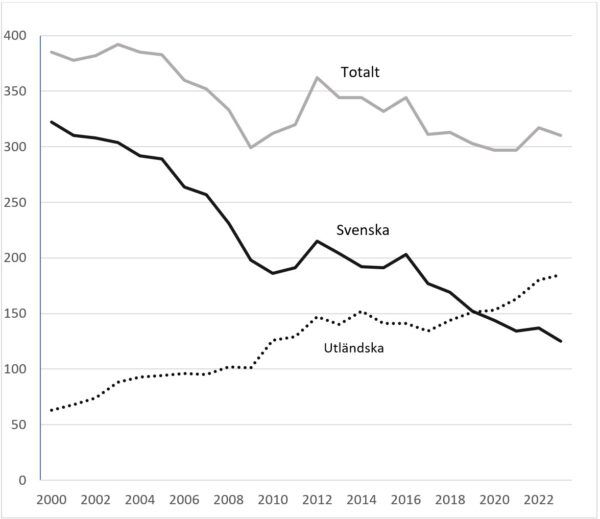
November 14, 2024 at 12:03 PM
De senaste 20 åren har antalet doktorander i nationalekonomi minskat ca 20 procent. En förklaring är de gradvis striktare villkoren för doktorandfinansiering: att vi måste betala doktoranderna mer har resulterat i att vi utestänger fler från utbildningen.


